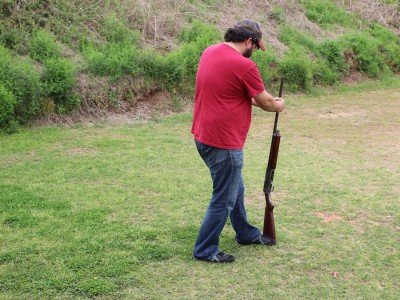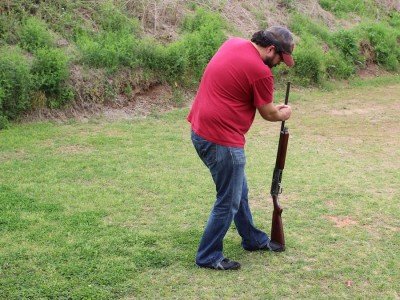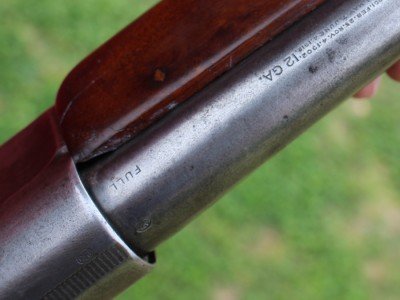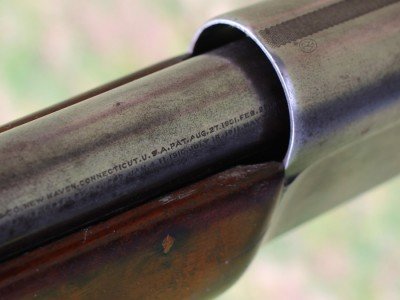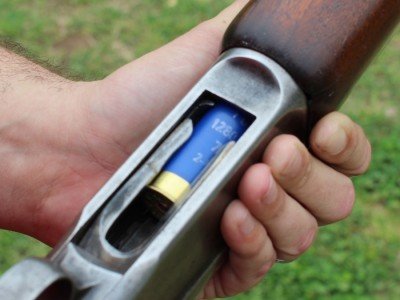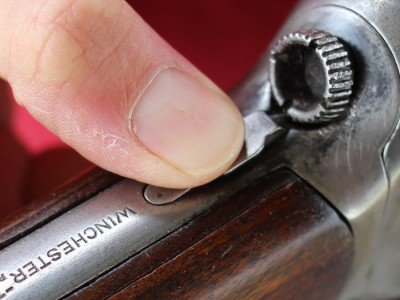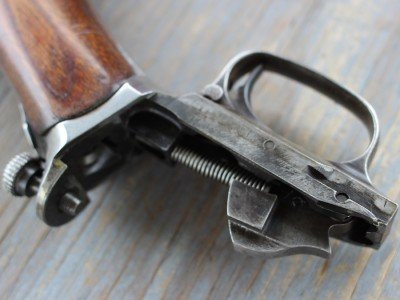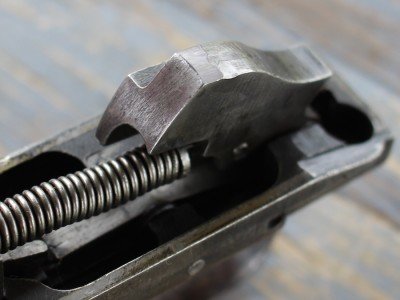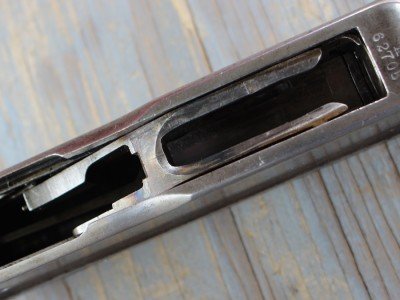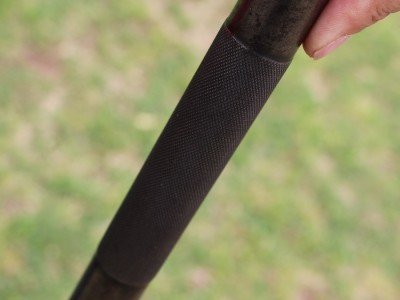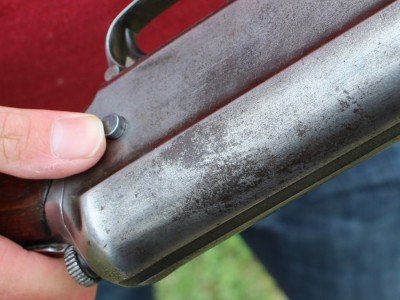Shooting History is our series where we take an old gun and review it like a new one. Well, the round counts are lower. If you have missed the other articles in this series you can find them here. If there is an old gun you would like to see in this series comment below and we will do our best to procure a shooter.
A Winchester 1911?
Yep, Winchester made a 1911. But it is not the 1911 you are looking for. This is the 1911 SL. The SL stands for self loading. This 1911 is a shotgun. Unlike the other 1911, this one was not designed by John Browning but he influenced the design in an interesting way.
[full_width]

The checkered grip on the barrel is a key feature of this design. The front sight reminds me of one on an 1873 Winchester.
[/full_width]
 The Browning Auto 5
The Browning Auto 5
John Browning designed the first successful auto loading shotgun with the Auto 5 in 1902. FN was the first to produce the new shotgun in Europe, the ones imported to the US were branded Browning. It quickly became a huge hit and was license to Remington and Savage. The Auto 5 is the second best selling semi-auto shotgun of all time. But before Auto 5 was made by FN, Browning took the design to Winchester who passed. They soon regretted this decision and set about making their own auto loading shotgun.
Patents
Winchester’s attempt to design an auto-loading shotgun was troubled. The main problem was to get around John Browning’s patents. Browning had been meticulous in securing patents on this design. Ironically this is something he had learned to do while working for Winchester in the past — notably designing the 1894 lever action rifle and the 1897 pump shotgun. With the Auto 5, Browning had patented everything that he could on the design. The primary designer of the Winchester 1911 SL was T.C. Johnson who once said it took him 10 years to design a shotgun that would work with out infringing on the Browning patents.
The Winchester 1911 SL has a long recoil action like the Auto 5. Long recoil actions have the barrel and bolt locked together during recoil. They share some other basic features as well. The both hold 5 shells in a tube magazine under the barrel around which is a recoil spring. But that is about it for the similarities.
The Widow Maker
One example of how the two deigns are different is in how they deal with recoil. Browning came up with brass and steel friction rings that control the action when fired. The Winchester couldn’t use the same friction rings so they used ones that were made of fiber. These break down over time and usage resulting in excessive recoil.
But that is not the biggest difference and design hurtle that Winchester faced. Browning patented the charging tab on the bolt. Yep, that little piece of metal that sticks off the bolt on the vast majority of auto loading shotguns and some rifles was at one time under patent by John Browning. So how on earth to you manually work the action without a charging tab on the bolt?! Well since this is a long recoil action, you use the barrel. See the pictures.
[one_half]
[/one_half][one_half_last]
[/one_half_last]
[one_half]
[/one_half][one_half_last]
[/one_half_last]
Loading the 1911SL is not hard. There is a push button that will lock the bolt back when you cycle the action with the barrel. Once the bolt is back, you load the magazine then release the bolt and it chambers a round. You can load another into the magazine to top it off after. That is easy and straight forward enough. Shooting it empty is not a problem either. The bolt does not hold back on the last round so you just start the process over to reload. This is supposed to be done while holding the shotgun in your hands and pushing the barrel and receiver together.
The problem comes when you need to unload the 1911SL. The only way to do this is to cycle the rounds through the action by pressing the barrel up and down until the shotgun is empty. If you are doing it the correct way you just have to make sure the barrel is in a safe position, like we all should be doing with every gun all the time. But a lot of people put the butt of the shotgun on the ground and cycle the action with both hands on the barrel. This is what I did in the above pictures. Doing it that way your face and head is awfully close to the muzzle. So close that if the shotgun were to discharge you could be seriously injured (as in killed dead). And it has happened a number of times with this Winchester design. That is why it has the Widow Maker nickname.
[full_width]
[/full_width]
This Old Gun
I picked this 1911SL up at a gun show a month or so ago especially for this series. This is not the first of these I have seen or shot. I have always been fascinated with them mainly for how Winchester got around the patents. Aside from the novelty of the Browning patents, they are actually pretty cool shotguns. One cool thing is that they are take downs. Hell, making it a take down was probably trying to get around another patent!
The review gun has been around the block and no telling how many bird hunting trips. There is very little of the finish left on the metal. The stocks on the 1911SLs are three pieces and have a tendency to crack. This one is not cracked but it is easy to see the 3 pieces. This one was made in 1920.
Shooting
This old shotgun still work really well. I didn’t try anything other than light target loads in it, but it cycled all 50 I put through it with out a problem. It had no problem dusting clays either. The recoil was pretty mild, about what I expect from an Auto 5 shooting the same load. The shells were not ejected very far, about a foot and a half from my feet. That was possibly a product of the light loads. I also shot it empty every time I loaded it.
Final Thoughts
In my opinion this is more of a novelty shotgun today. It was a very clever effort to get around the patents of what is one of the best designed auto loading shotguns ever made. That was what the Winchester 1911SL was up against. Look at the production numbers for proof. Winchester made around 83,000 of the 1911SL. Remington made 850,000 of their version of the Auto 5, the Model 11. And don’t forget that Winchester was offered the Auto 5 first.
[full_width]

The bolt return spring is in the stock like on most semi-auto shotguns. But most of them do not have 3 piece stocks. This might be another Browning patent go around.
[/full_width]
[one_half]
[/one_half][one_half_last]
[/one_half_last][one_half]
[/one_half][one_half_last]
[/one_half_last][one_half]
[/one_half][one_half_last]
[/one_half_last]
